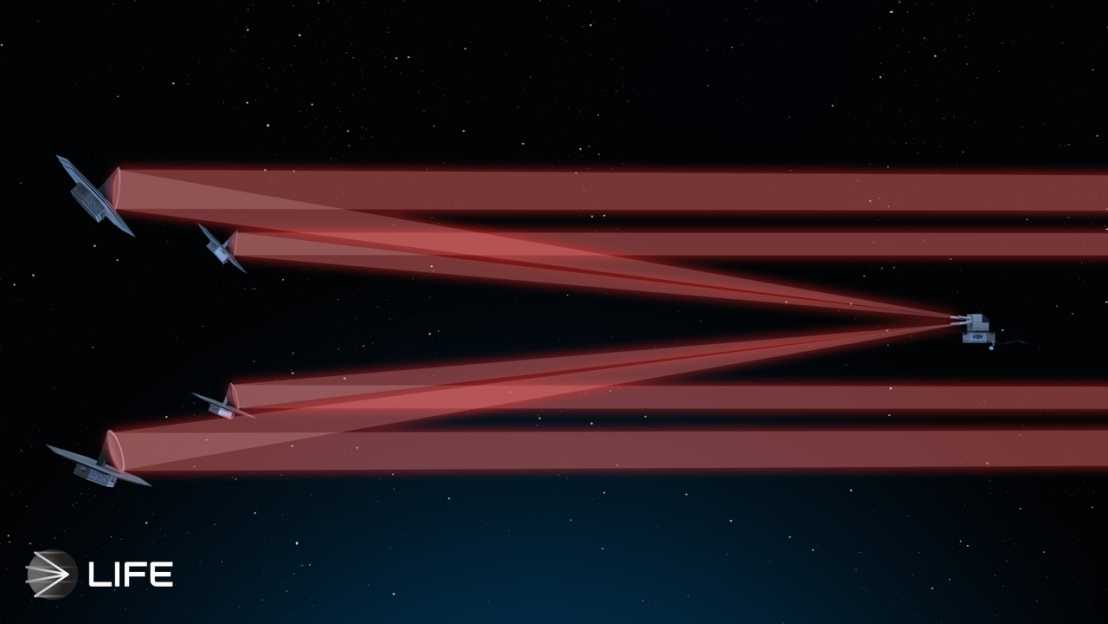Research Project S. Quanz and D. Vance
Quantifying the prospects for characterizing habitable and inhabited terrestrial exoplanets with future observations

A long-term goal of exoplanetary science is to identify habitable planets beyond the Solar System and to search for indications of extraterrestrial life. In this project, we investigate how the Large Interferometer For Exoplanets (LIFE), a Swiss-led large future exoplanet space mission, can contribute to this goal. Specifically, we quantify how well remotely detectable observational signatures need to be measured by LIFE for observers to conclude that an exoplanet is indeed habitable or inhabited.
Abstract
A long-term goal of exoplanetary science is to identify habitable planets beyond the Solar System and to search for indications of extraterrestrial life. While, statistically speaking, exoplanets with sizes and temperatures similar to Earth and Venus in our Solar System are expected to be ubiquitous, current telescopes and observatories are not powerful enough to detect a large sample of these planets and measure their atmospheric properties. However, for the foreseeable future, investigating the atmospheric properties, such as the pressure temperature profile and molecular composition, is the only way to constrain or even conclude if an exoplanet is habitable or even inhabited. The Large Interferometer For Exoplanets (LIFE) is a concept for a future exoplanet space mission that is designed to achieve this ambitious goal. But what are good observational signatures that would indicate a habitable or even inhabited planet? And how well would LIFE have to measure these signatures for scientists to arrive at the conclusions that an object is habitable or inhabited? This project addresses these questions by a combination of exoplanet models, simulated observations and subsequent data analysis. A main focus will be on assessing whether the carbon silicate cycle, which acts as a thermostat on Earth keeping our planet habitable, and disequilibrium chemistry in an atmosphere, as created by biosignature gases such as oxygen and methane, can be directly and robustly observed on exoplanets and then reliably used to classify object as habitable and/or inhabited.
Team
This project is a joint effort between the research groups of Derek Vance (Institute for Geochemistry and Petrology) and Sascha Quanz (Institute for Particle Physics and Astrophysics).
External Link(s)
external pageThe LIFE Initiativecall_made - A space mission designed to characterize terrestrial exoplanet atmospheres and search for life outside the solar system
